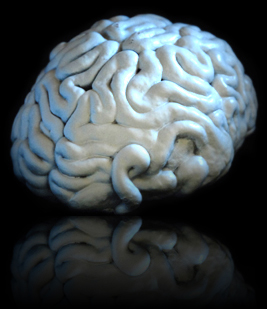 |
|
Bimanual Actions Associate Professor Liz Franz Please Select > Articles > About > FMRIOtago > Lab Members > Contact FMRIOtago |
 |
| FMRIOtago: New website under development Click here to download: Conversion_Disorder_Preliminary results April 2009.pdf Click here to download: D. Kingsley, A. Zaman, E. Franz, N. Roberts (2004). Functional Anatomy of the Observation and Imagination of Unimanual and Bimanual Actions. Proc. Intl. Soc. Mag. Reson. Med. 11 p.1131  Getting inside your head Getting inside your head
He Kitenga, 2005
Try drawing a circle with one hand while drawing a square with the other. Why is it so difficult? Dr Liz Franz, senior lecturer in psychology at the University of Otago, is finding some answers. Dr Graeme Hammond-Tooke, Jill Oliver, Dr Liz Franz and Dr James Fulton “Perhaps when we move, the brain has a mechanism for suppressing other movements,” she says. In her laboratory studies, Franz presents stimuli on computer screens to which participants respond by either producing movements or suppressing them. To complement her behavioural work in the lab, Franz tests research participants while they lie with their heads in an fMRI (functional magnetic resonance imaging) scanner that registers changes in blood flow in their brains. While the scanner is recording activity in their brains, they tap buttons with their fingers when they hear stimulus tones or see visual stimuli, taking care to keep their heads completely still. The resulting brain images show brightened areas where the brain is active. “We’re exploring the brain’s focused selection of certain thoughts and actions, and processes of inhibition. As part of this research, we are testing research patients who have impairments in either of these processes, in the hope of understanding the underlying neural mechanisms.” One project involves a unique collaborative effort between the University and Healthcare Otago, the first joint research effort of its kind. Franz and her team at Dunedin Hospital – neurologist Dr Graeme Hammond-Tooke, technologist Jill Oliver and radiologist Dr James Fulton – are investigating why inhibitory processes sometimes go awry. Their patients suffer from conversion disorder – they once had normal movement but, for no apparent reason, became unable to move. This has resulted in inexplicable paralysis in different parts of their bodies. A large group of control participants without the disorder are being tested as well. “This is a big first step in understanding the problem because we’re actually going to assess the brain areas involved and how they differ from those in people who don’t have this disorder. “To figure out what areas of the brain are active we need something like fMRI. Without the scanning, all we can do is make inferences. We really need to get into the brain. fMRI gives us images of what areas are active when patients are doing tasks. It’s a fascinating technology.” Franz is driven by the need to test her theoretical questions. “Assessing actual brain activation adds an important dimension to our behavioural research.” It is hoped the findings will lead to new therapeutic methods and assisted-learning programmes to treat conversion disorder, and ultimately other disorders involving problems with focused selection and inhibition, such as Parkinson’s disease, stroke and schizophrenia. The two-year project complements work Franz is doing with researchers at the University of California in the United States, where she is using fMRI to investigate focused selection and inhibition in people with Parkinson’s disease. The California research is funded by a grant from the National Institute of Health (USA). |